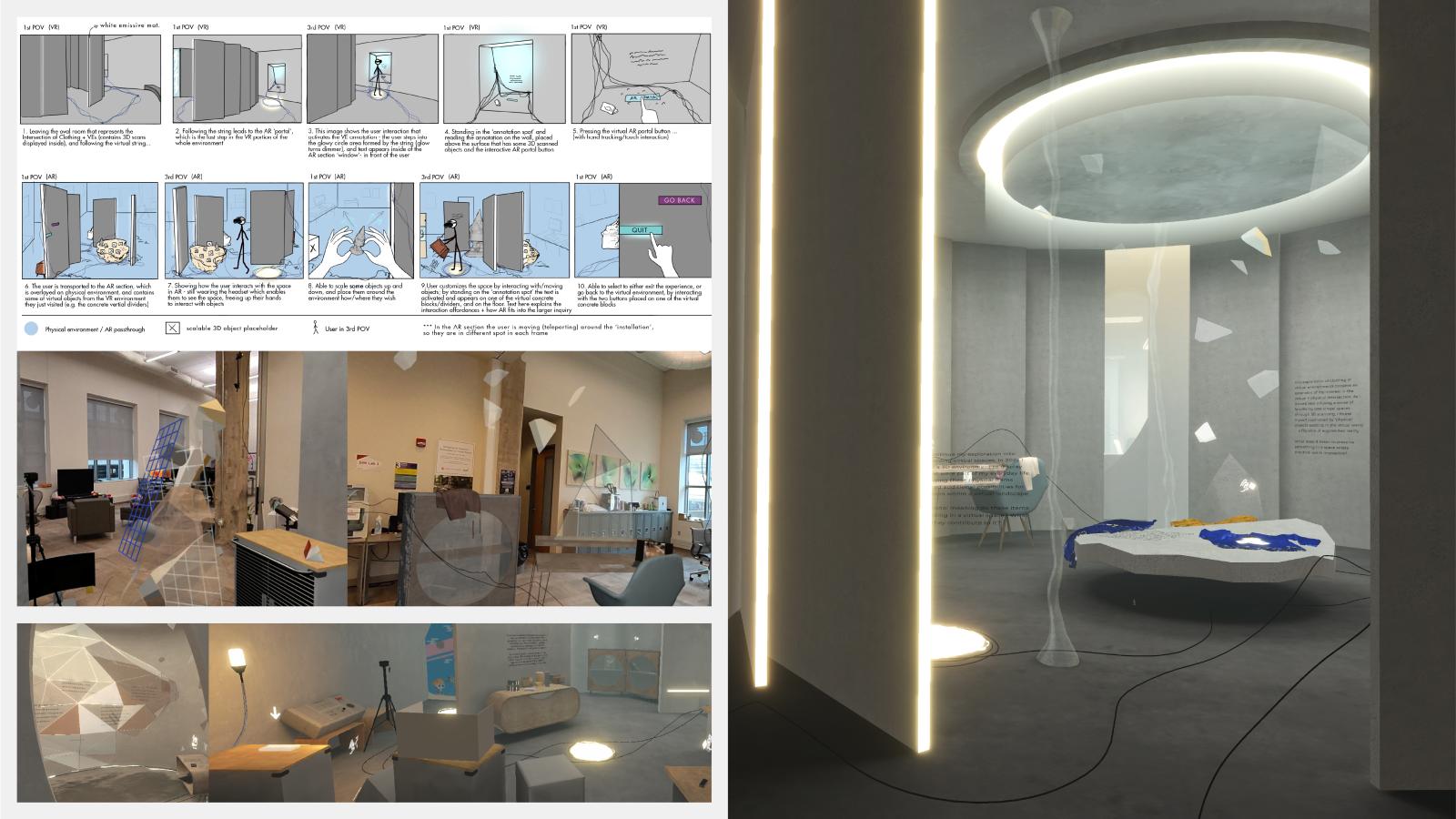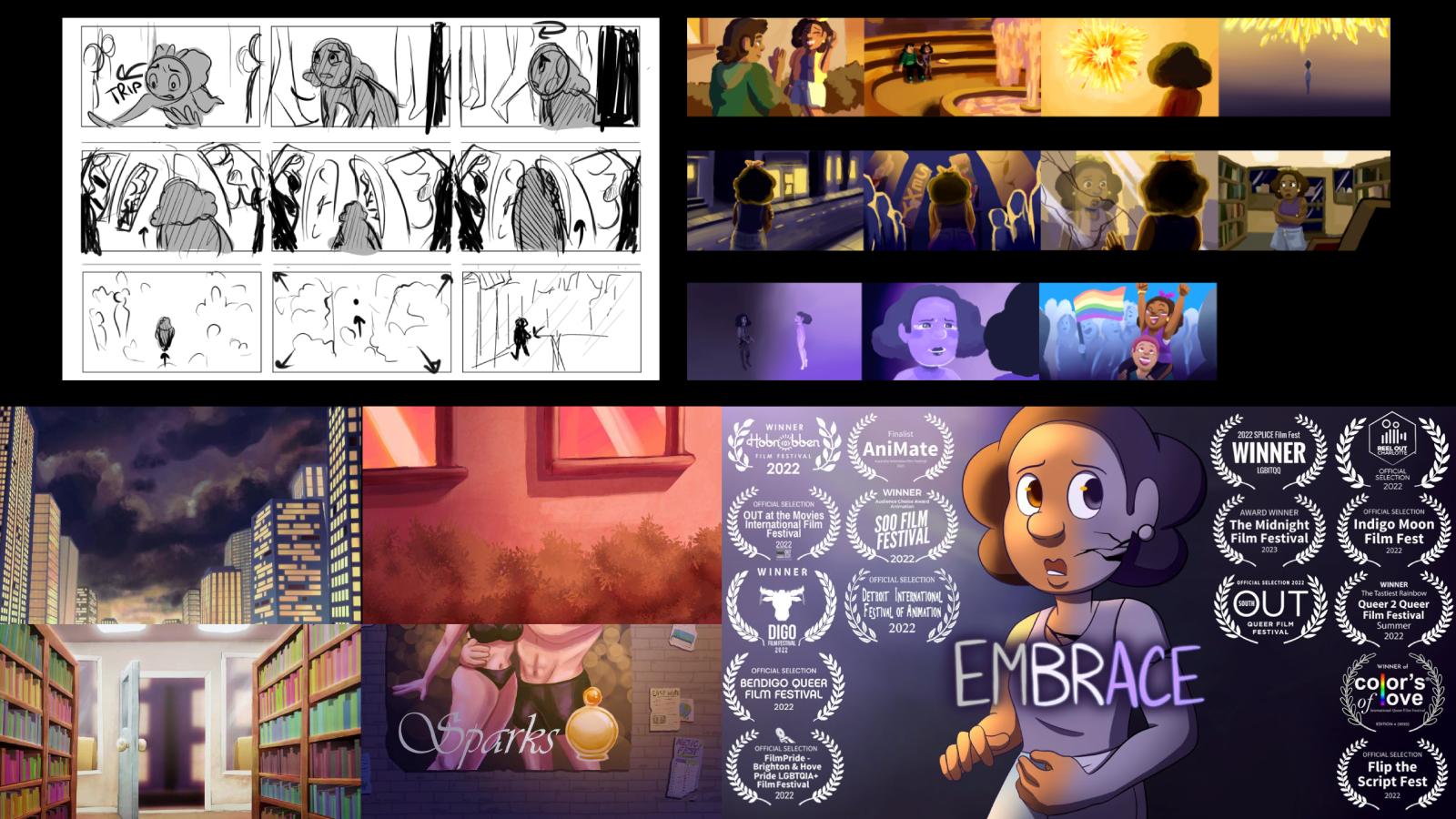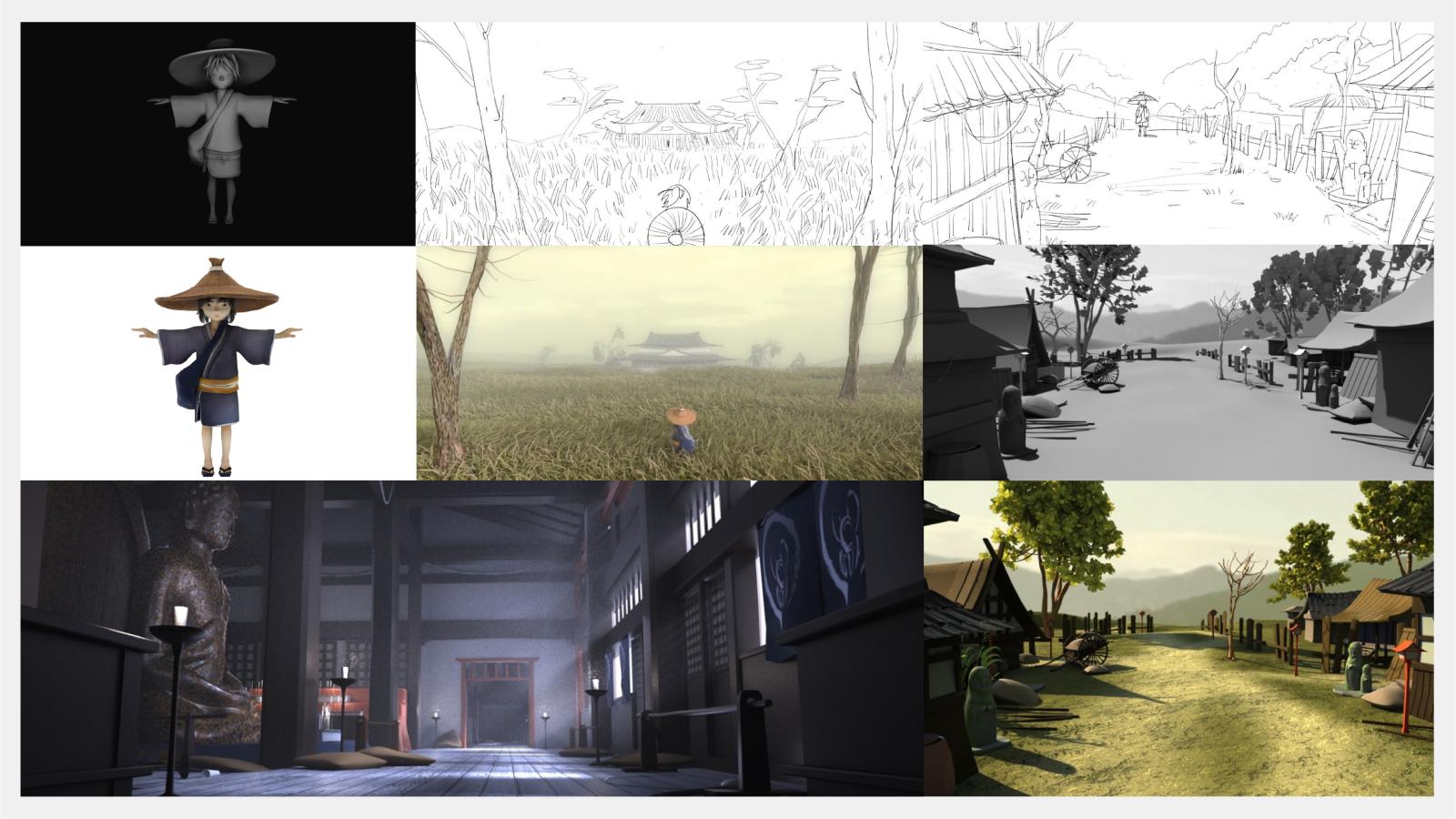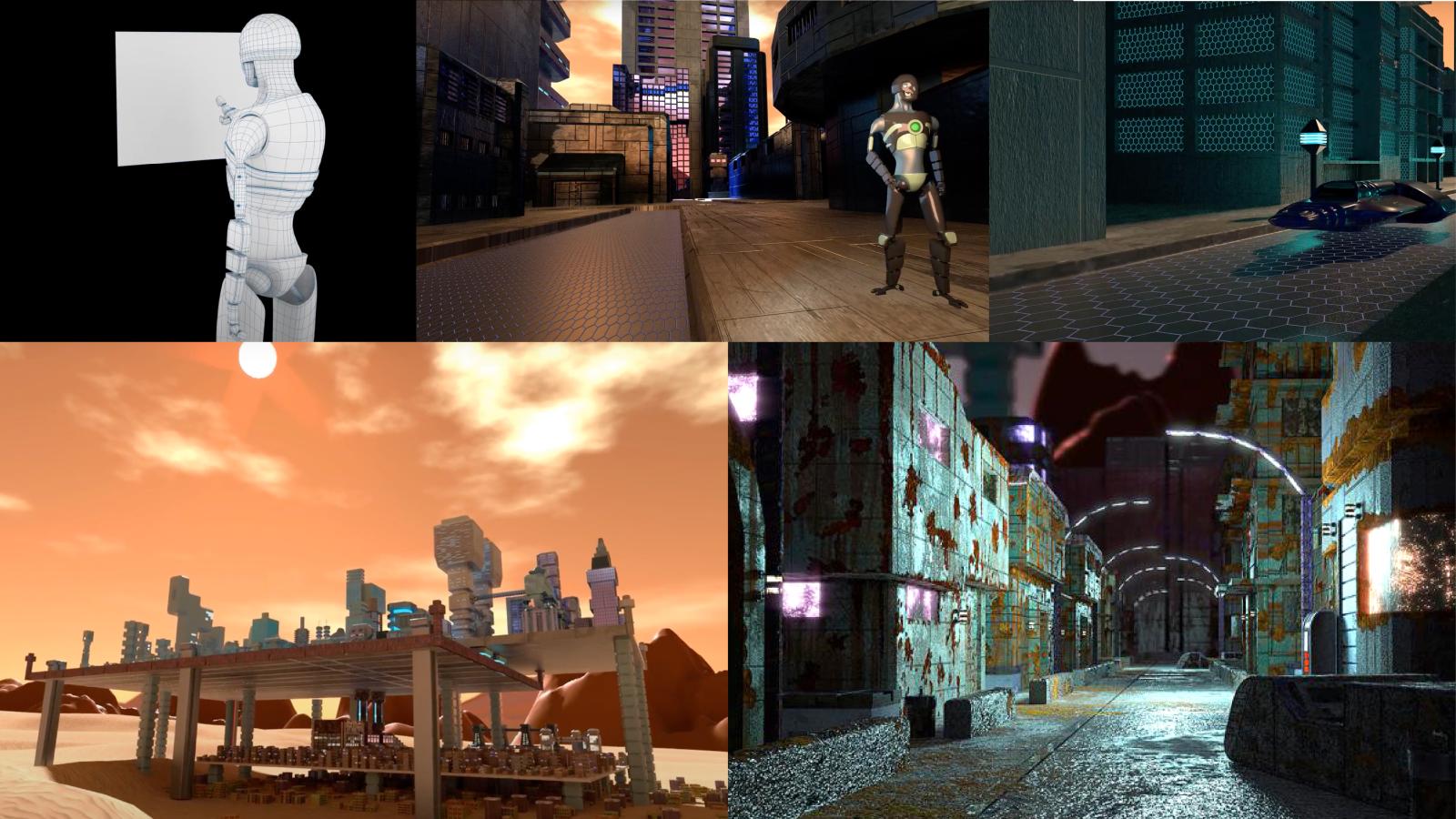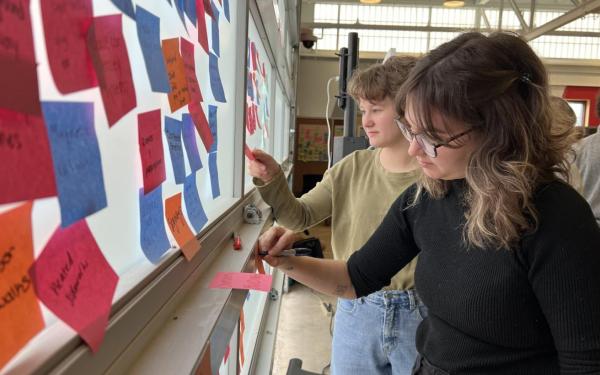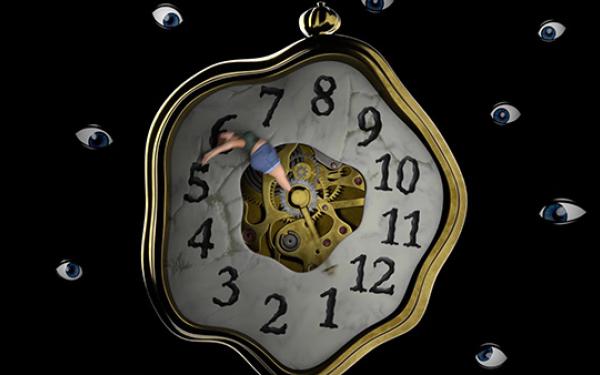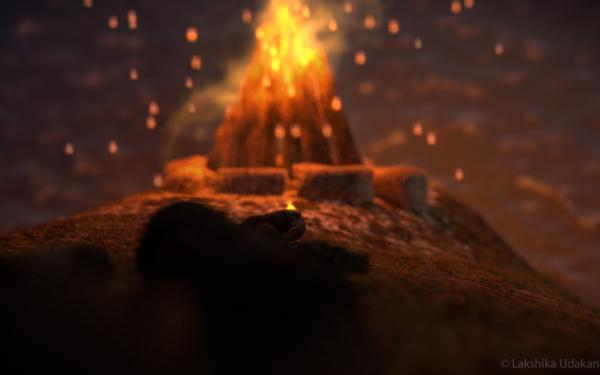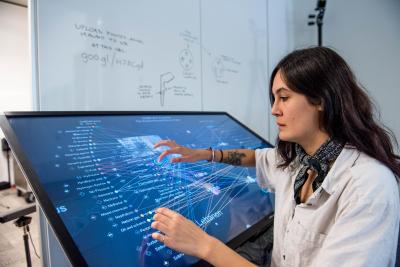
The Digital Animation and Interactive Media track provides opportunities for students with backgrounds in animation to develop their own creative visions for multidisciplinary and collaborative activities in a research environment. In collaboration with the Advanced Computing Center for the Arts and Design (ACCAD), the definition of digital animation extends beyond the traditional through the exploration of new and emerging technologies. Real time graphics and virtual environments, performance animation, game art, responsive and interactive media and installations are some of the areas in which we expand the applications of digital animation. These investigations form new ground for the design and creation of meaningful content by the animation designer.
Students in this track are required to complete 60 credit hours of study to receive a MFA in Design. The program takes three years to complete, and only under exceptional circumstances is the track completed in less time. This includes core design courses, thesis project and writing development, and open electives in the themes of studio/lab, history/theory/criticism, and collaborative/interdisciplinary studio. Students work closely with a three-person thesis committee to develop their thesis topics and the vehicles best used for their development.
Curriculum
The Digital Animation and Interactive Media program leading to the Master of Fine Arts (M.F.A.) in Design is formulated for students intending to work as designers in the digital animation and interactive industries and in colleges and universities teaching animation and interaction related courses.
The curriculum philosophy is one of learning through experimentation and practice. Year One is constructed as an Exploration year, in which students choose new experiences that will enhance their current understanding of new media. Year Two is a Practice and Application year which demands continued exercising and rehearsal of new practices. Year Three results in Synthesis, in which students demonstrate a deep understanding of the craft and its context.
Example Course Plan
Autumn Semester
DESIGN 6101 Foundation for Grad Studies, 3 credits
DESIGN 6130 Emerging Technology Studio or DESIGN 6430 Graduate Studio, 3 credits
Elective, 3 credits
Spring Semester
DESIGN 6102 Exploration in Graduate Design Studies, 3 credits
DESIGN 6430 Graduate Studio, 3 credits
Elective, 3 credits
Program Milestone: First Year Review (Research Orientation)
Summer
Electives, 4-6 credits
- For Autumn and Spring semesters, students on 50% Graduate Associateship appointments must be enrolled for a minimum of 8 credits. For a 25% appointment, the minimum is 4 credits.
- Students awarded a Fellowship must enroll for a minimum of 12 credits for Autumn and Spring semester, and at least 6 credits for Summer semester.
- Internship (up to 6 credits) can fulfill Studio Elective or Interdisciplinary Elective credits depending on the nature of the work experience. This is determined by the advisor.
- Elective courses maybe taken in any order, and within Design or in other departments or centers at OSU.
Autumn Semester
DESIGN 6230 Research Through Design Studio, 3 credits
Elective, 3 credits
Elective, 3 credits
Spring Semester
DESIGN 6430 Graduate Studio, 3 credits
ARTEDUC 7725 Re-Imagining Research through Creative Inquiry, 3 credits
Elective, 3 credits
Program Milestone: Second Year Review (Research Proposal & Plan)
Summer
Electives, 4-6 credits
- For Autumn and Spring semesters, students on 50% Graduate Associateship appointments must be enrolled for a minimum of 8 credits. For a 25% appointment, the minimum is 4 credits.
- Students awarded a Fellowship must enroll for a minimum of 12 credits for Autumn and Spring semester, and at least 6 credits for Summer semester.
- Internship (up to 6 credits) can fulfill Studio Elective or Interdisciplinary Elective credits depending on the nature of the work experience. This is determined by the advisor.
- Elective courses maybe taken in any order, and within Design or in other departments or centers at OSU.
Autumn Semester
DESIGN 7998 Thesis Project Development (Research Elective), 3 credits
DESIGN 7999 Thesis Writing (Research Elective), 3 credits
Elective, 3 credits
Spring Semester
DESIGN 7998 Thesis Project Development (Research Elective), 3 credits
DESIGN 7999 Thesis Writing (Research Elective), 3 credits
Elective, 3 credits
Thesis Defense: Project Exhibition, Oral Defense
- For Autumn and Spring semesters, students on 50% Graduate Associateship appointments must be enrolled for a minimum of 8 credits. For a 25% appointment, the minimum is 4 credits.
- Students awarded a Fellowship must enroll for a minimum of 12 credits for Autumn and Spring semester, and at least 6 credits for Summer semester,
Curriculum Credit Distribution
Courses include: 6200, 6300, 6400, 7998, and 7999.
Courses providing hands-on experiences that advance skill applied in creative research or to understand and incorporate experimental or applied practices in any discipline.
Courses providing strong emphasis on history and analytical methods, as well as the philosophical, political, material, and context for works related to design, animation, or interactive media and specific research interests.
Courses providing opportunities to study and interact with another discipline beyond design.
For detailed information about forming Thesis Committees, the first year review and Thesis Committee Review, please see the Department of Design Graduate Studies Handbook.
Career Prospects
- CG generalist or specialist
- Augmented Reality Designer
- Design Director/Manager
- Design Educator
- Design Researcher
- Human-Computer Interaction Designer
- Experiential Designer
- Game Designer
- Mixed Reality Designer
- Interaction Designer
- Motion Graphics Designer
- Multimedia Designer
- User Experience (UX) Designer
- User Interface (UI) Designer
- User Interface (UI) Research
- User Experience (UX) Strategist
- User Experience (UX) Researcher
- Visual Communication Designer
- Visualization Specialist
- Virtual Reality Designer
Research Gallery: Example DAIM Projects
See our Research Gallery or click the links below to view past examples of DAIM projects featured at our annual Graduate Spring Exhibition, which occurs at the Hopkins Hall Gallery.

